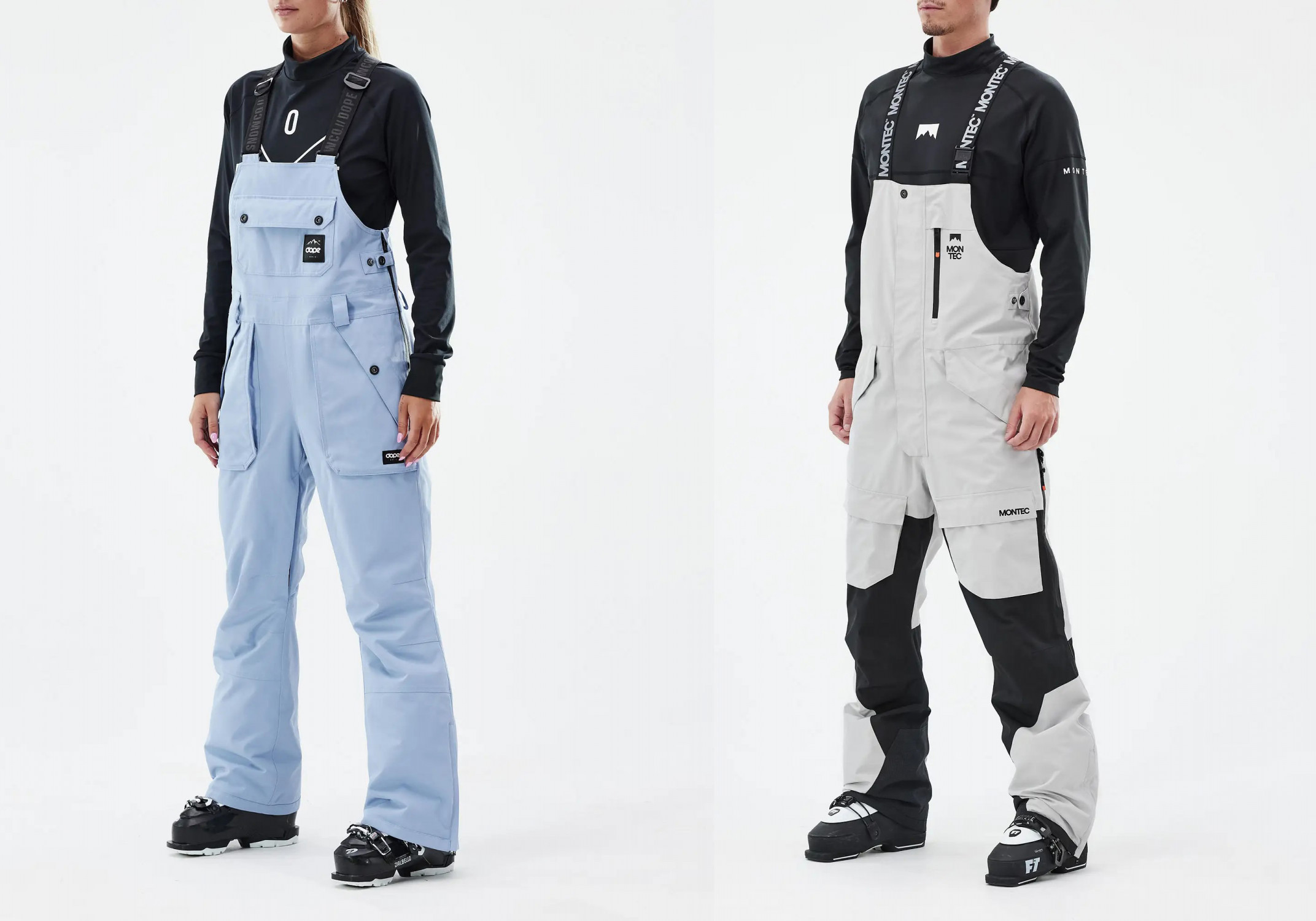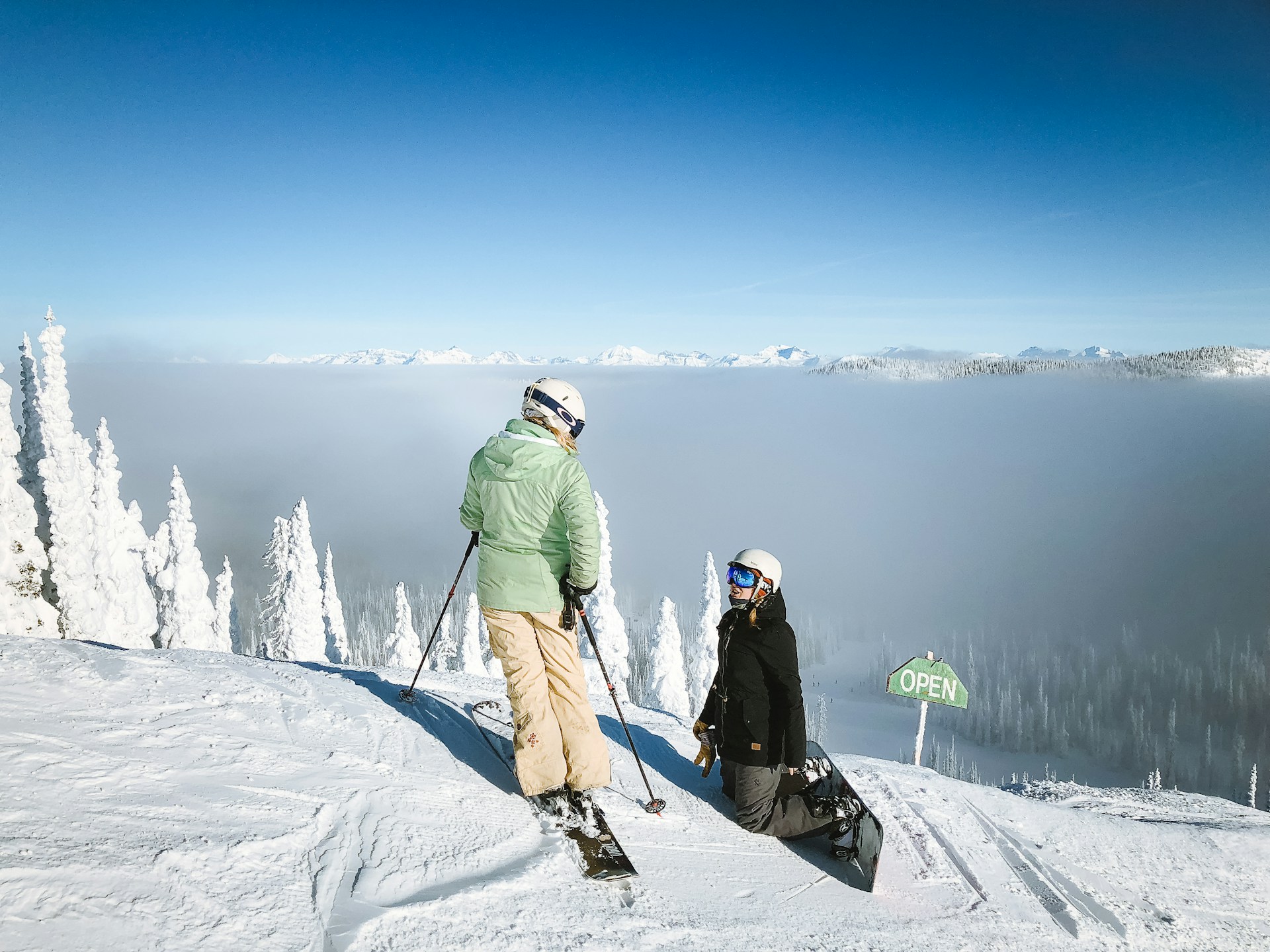If you’re looking for the best ski or snowboard pants, then you’ve come to the right place.
Whether you’re gearing up for your first holiday, or looking to make the jump from casual to ‘I know what I’m doing out there’, then you’ll need the right pair of pants for the job. Not all pants are created equal, and with some coming with insulation, some without, some designed for backcountry, and some designed for park, there’s so much to consider. And what the heck is a ‘bib’ anyway? Something to keep my jacket clean while I eat? Not quite …
The main types of ski pants
There are three different types of ski pants to choose from when you’re buying the right pair:
Insulated ski pants
These ski pants will have an ‘outer shell’ that’s waterproof and then will have a layer of insulation under that to keep you warm, and then a soft liner to protect it. They’re the most common type of pants are are a great, easy choice for every situation.
Shell ski pants
Shell pants don’t have a built-in layer of insulation, so they’re cooler than insulated pants. They tend to be lighter and are great for ski touring or park riding, or for riders who get warm on the mountain.
Bib pants
Bib pants are often shell pants, but can be insulated too. Unlike regular pants, bib pants don’t have a waistband to secure them but are more like dungarees, and are secured at the shoulder with suspenders..

Picture above: Dope Notorious B.I.B. (left) and Montec Fawk Bib Pants (right)
10 Essential features to look out for in ski pants
- Waterproofing: Look for a high waterproof rating (e.g., 20,000mm+) to ensure you stay dry in wet snow or slushy conditions. Waterproof materials like Gore-Tex offer reliable protection.
- Breathability: Essential for comfort, especially during high-intensity skiing. A breathability rating of 20,000g+ helps wick away moisture and prevent overheating.
- Insulation: Choose between synthetic insulation for lightweight warmth and moisture resistance, or down insulation for maximum warmth in very cold conditions.
- Taped seams: Fully taped seams or welded seams prevent water from seeping through the stitching, enhancing the waterproofing of the pants.
- Vents: Inner or outer thigh vents allow you to regulate temperature, letting excess heat escape during warmer days or intense activity.
- Gaiters: Built-in snow gaiters fit over ski boots to keep snow out, especially useful when skiing in deep powder or on wet days.
- Reinforced cuffs: Extra durable material at the bottom of the legs protects against wear from ski edges and boots, extending the life of the pants.
- Adjustable waist: Features like Velcro straps, belt loops, or elasticized waistbands provide a customised, snug fit to keep the pants secure and comfortable.
- Pockets: Zippered pockets with waterproof closures are ideal for storing essentials like ski passes, snacks, or your phone.
- Fit and mobility: Opt for an ergonomic design with articulated knees and a relaxed fit, allowing for a full range of motion while skiing.
So what are the best ski pants for me?
Let’s dig deeper into each type so we know what we’re looking at here.
Insulated ski pants
Insulated ski pants are built with a multi-layer design: a waterproof outer shell, an insulating layer, and a lining for comfort. The insulation is typically synthetic, like polyester, which traps heat by creating small air pockets within its fibres. Some higher-end options use down insulation for maximum warmth.
These pants are great for cold conditions and are ideal if you’re skiing in colder climates or during the heart of winter. The downside? They aren't as versatile because you can’t remove the insulation if you get too warm. For spring skiing or warmer days, they can make you overheat, so they’re best suited for colder resorts or those who tend to feel the chill more easily.
Is an insulated pant right for me?
If you often feel the cold or are skiing in a colder climate, then insulated pants are a good choice. They’re best for those who want warmth without needing to layer up excessively.
Shell ski pants
Shell ski pants are all about flexibility. They don't have built-in insulation, which makes them lighter and more breathable. This design is ideal for layering, so you can adapt your clothing to the weather. Because of their reduced bulk, they offer better manoeuvrability, making them popular with park riders, backcountry skiers, or those hitting the slopes in milder conditions.
Shell pants are great if you’re looking for versatility in changing weather conditions. However, they require some knowledge of layering, as they alone won't keep you warm. For beginners or those heading to cold destinations where you’ll spend a lot of time sitting around in the snow, these might not provide enough warmth on their own.
Is a shell pant right for me?
If you’re skiing in milder conditions, prefer layering to control your warmth, or need lightweight and breathable gear for active skiing, then shell pants are a great option.
Bib ski pants
Bib pants extend higher up the torso, secured by shoulder straps instead of a waistband. This design provides additional coverage and protection, especially in deep snow. They come in both insulated and shell versions, offering flexibility depending on your needs.
Bibs are preferred for their ability to keep snow out and for the extra warmth they provide. They’re a solid choice for those skiing in powder or venturing into backcountry terrain. The trade-off is that they can be more cumbersome to remove, especially when nature calls, so they require a bit more planning throughout your ski day.
Are bib pants right for me?
If you’re planning to ski in deep powder, venture into backcountry terrain, or want extra coverage and flexibility, then bib pants are ideal. Just be prepared for the added effort when it comes to layering and bathroom breaks.
Ready to pull the trigger on a new pair of pants?
Now that you know the different types of ski pants and which features to look for, it’s time to choose the right pair for your needs. Whether you’re after the warmth of insulated pants, the versatility of shell pants, or the extra coverage of bibs, the key is finding what suits your skiing style and the conditions you’ll be facing. Get the right fit, think about the features that matter most to you, and you’ll be set to tackle the slopes in comfort. Happy skiing!
